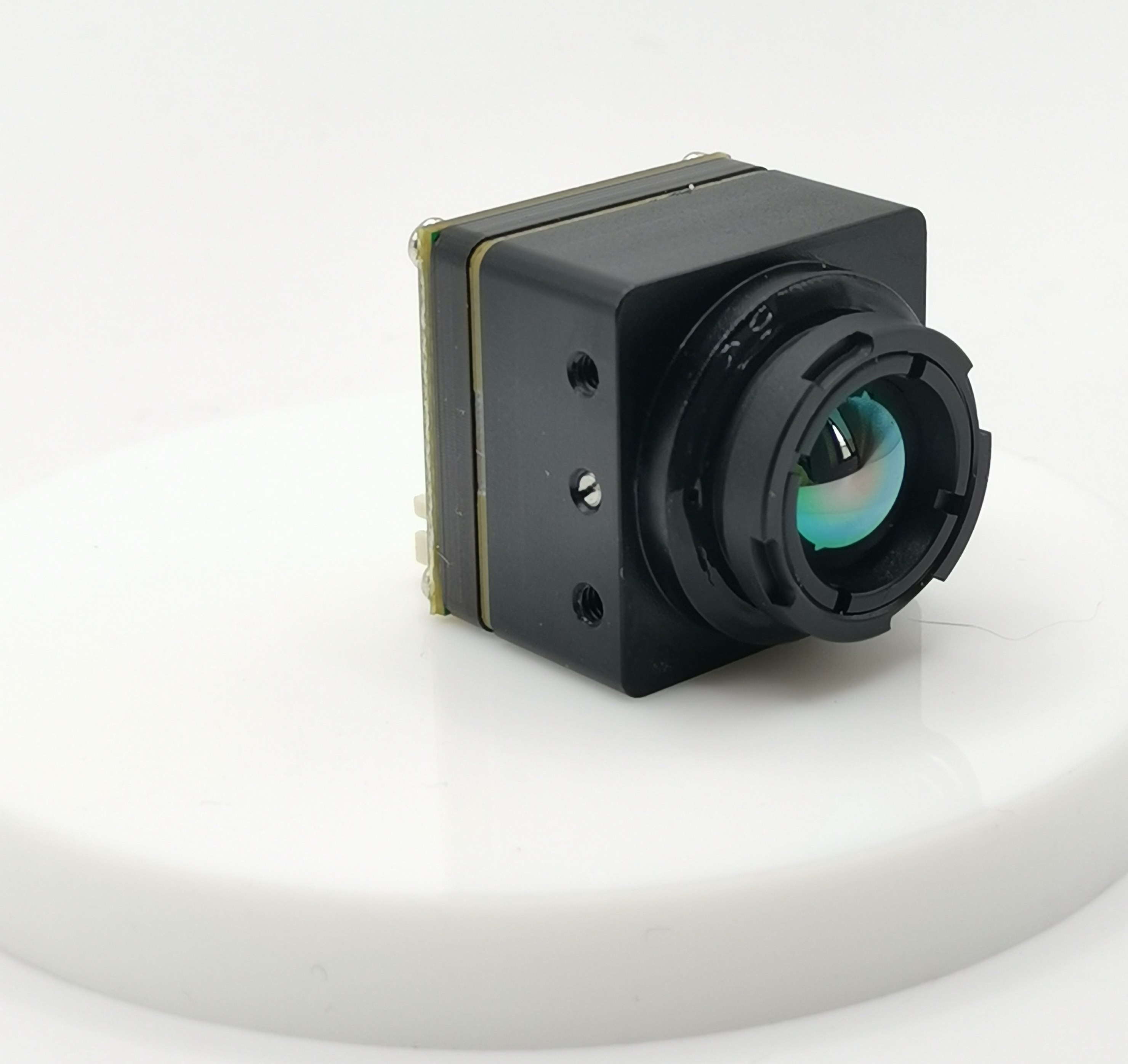How to Choose the Best FPV Thermal Camera for Drones

Why FPV Thermal Cameras are a Game-Changer for Drones
FPV thermal cameras have revolutionized the capabilities of drones, offering a unique perspective through thermal imaging technology. The magic behind thermal imaging lies in its ability to detect and capture heat signatures, providing valuable insights beyond what traditional cameras can offer.
The Magic Behind Thermal Imaging
How Thermal Cameras Work
FPV thermal cameras operate by detecting the heat emitted by objects and translating it into visible images. This is achieved through the use of specialized sensors that can detect infrared radiation, allowing the camera to create a visual representation of temperature variations. By leveraging this technology, FPV Thermal Cameras enable drone operators to capture crucial data that is otherwise invisible to the naked eye.
The Advantages of Thermal Vision in Drones
The advantages of integrating thermal vision into drones are manifold. It equips drones with the ability to conduct operations in low-light conditions, identify heat sources from a distance, and enhance situational awareness. In search and rescue missions, FPV Thermal Cameras can detect human body heat even in challenging environments, significantly improving the chances of locating individuals in need of assistance.
Real-World Applications
Search and Rescue Missions
One of the most impactful applications of FPV thermal cameras is in search and rescue missions. These cameras empower drones to swiftly locate missing persons or survivors by detecting their body heat, even in remote or obscured locations.
Wildlife Monitoring
In wildlife conservation efforts, FPV thermal cameras aid researchers in tracking animal movements and studying their behavior without causing disturbance. This non-invasive approach provides valuable insights into nocturnal activities and habitat usage patterns.
Agricultural and Industrial Inspections
For agricultural and industrial purposes, FPV thermal cameras enable efficient monitoring of crop health, irrigation systems, and equipment performance. They can identify areas of heat loss or machinery malfunctions, contributing to proactive maintenance strategies.
Understanding the Basics of FPV Thermal Cameras
FPV thermal cameras are equipped with essential features that make them indispensable tools for drone operations. Understanding these key features and their implications is crucial when choosing the best FPV thermal camera for your specific needs.
Key Features to Look For
Thermal Resolution and Frame Rate
When evaluating FPV thermal cameras, thermal resolution and frame rate are critical factors to consider. The thermal resolution determines the level of detail and clarity in thermal images, while the frame rate dictates the smoothness of video footage. Higher resolutions and frame rates contribute to more accurate and actionable thermal data, especially in dynamic environments.
Weight and Size Considerations
The weight and size of an FPV thermal camera can significantly impact a drone's performance and maneuverability. It's essential to prioritize lightweight and compact designs that minimize added payload without compromising on image quality. This consideration becomes particularly important for smaller drones with limited carrying capacity.
Night Vision Capabilities
Night vision capabilities are a defining feature of advanced FPV thermal cameras. These capabilities enable drones to operate effectively in low-light or nighttime conditions, expanding their utility across a broader range of applications. By leveraging night vision technology, drone operators can conduct surveillance missions, wildlife monitoring, or security operations during nocturnal hours.
Connectivity and Compatibility
Wireless Connectivity Options
Seamless wireless connectivity options enhance the functionality of FPV thermal cameras by enabling real-time data transmission to ground stations or mobile devices. WiFi 802.11 b/g/n compatibility ensures efficient data transfer, allowing operators to analyze live thermal feeds for immediate decision-making.
Compatibility with Different Drone Models
Compatibility with various drone models is paramount when selecting an FPV thermal camera. Ensuring seamless integration with different drone platforms guarantees versatility in deploying thermal imaging capabilities across diverse operational scenarios. Whether it's a fixed-wing drone for long-range missions or a quadcopter for close-range inspections, compatibility plays a pivotal role in maximizing the utility of an FPV thermal camera.
By carefully assessing these key features related to resolution, frame rate, size, weight, night vision capabilities, connectivity options, and compatibility with different drone models, you can make an informed decision when choosing the best FPV thermal camera for your specific drone applications.
Choosing the Best Kind of Thermal Camera for Your Drone
Now that we understand the fundamental features of FPV thermal cameras, it's essential to delve into specific case studies and comparisons to make an informed decision when selecting the best kind of thermal camera for your drone.
The Seek Thermal Compact Pro: A Case Study
Features and Benefits
The Seek Thermal Compact Pro stands out as a leading example of an advanced FPV thermal camera designed for drone applications. With its high thermal resolution and impressive frame rate, this compact pro model delivers exceptional clarity and real-time thermal imaging capabilities. Its lightweight and compact design make it an ideal choice for drones with payload limitations, ensuring minimal impact on flight performance.
One of the key benefits of the Seek Thermal Compact Pro is its seamless integration with various drone models, offering unparalleled versatility in deploying thermal imaging technology across different operational scenarios. The night vision capabilities further enhance its utility, enabling drones to operate effectively in low-light conditions, expanding their potential applications beyond daylight operations.
However, it's important to consider some limitations and considerations when evaluating the Seek Thermal Compact Pro. While it excels in providing high-quality thermal imaging, its price point may be a limiting factor for budget-conscious drone operators. Additionally, compatibility with older drone models or specific proprietary systems may require additional adapters or modifications, adding complexity to the integration process.
Comparing FPV Thermal Cameras
The iSun Analog FPV Thermal Camera
When comparing FPV thermal cameras, another notable option is the iSun analog FPV thermal camera. This model offers competitive thermal resolution and a reliable frame rate, making it suitable for capturing detailed thermal data during drone operations. Its compact form factor and lightweight design contribute to minimizing payload impact while ensuring optimal image quality.
Assessing Your Needs and Budget
When choosing between different FPV thermal cameras, it's crucial to assess your specific needs and budget constraints. Consider the operational requirements of your drone missions, such as long-range surveillance, close-range inspections, or nocturnal operations. Evaluate whether advanced features like night vision capabilities are essential for your applications or if a standard daytime operation suffices.
Furthermore, carefully analyze your budget allocation for acquiring an FPV thermal camera. Balancing cost considerations with desired features and performance can guide you towards selecting a thermal camera that aligns with your operational requirements without exceeding budgetary constraints.
Practical Tips for Using Your FPV Thermal Camera
Now that you have chosen the best FPV thermal camera for your drone, it's essential to understand how to effectively utilize and maximize its potential. Here are some practical tips for installation, setup, maintenance, and creative exploration with your FPV Thermal Camera.
Installation and Setup
Mounting Your Camera
When mounting your FPV Thermal Camera onto your drone, ensure that it is securely attached to minimize vibrations and maintain stability during flight. Consider the center of gravity and aerodynamics to optimize the overall performance of your drone with the added payload. Follow the manufacturer's guidelines for mounting procedures to prevent any damage to the camera or the drone.
Configuring Settings for Optimal Performance
Before each flight mission, take the time to configure the settings of your FPV Thermal Camera for optimal performance. Adjust parameters such as color palettes, temperature scales, and image enhancement features based on the specific environmental conditions and operational objectives. Conduct test flights to fine-tune these settings and ensure that you are capturing accurate thermal data.
Maximizing the Potential of Your Thermal Camera
Best Practices for Maintenance
To prolong the lifespan and functionality of your FPV Thermal Camera, adhere to regular maintenance practices. Keep the lens clean from dust or debris that may affect image clarity. Inspect cables and connections for any signs of wear or damage. Additionally, store your camera in a protective case when not in use to safeguard it from external elements.
Creative Uses and Experimentation
Beyond traditional applications, consider exploring creative uses of your FPV Thermal Camera. Experiment with different flying altitudes and angles to capture unique thermal perspectives. Collaborate with other drone enthusiasts or professionals in related fields to exchange ideas on innovative ways to leverage thermal imaging technology.
By following these practical tips for installation, setup, maintenance, and creative exploration with your FPV Thermal Camera, you can harness its full potential and expand its utility across various aerial missions.
Wrapping Up
The Future of FPV Thermal Imaging in Drones
As technology continues to advance at a rapid pace, the future of FPV thermal imaging in drones holds promising developments and innovations. Emerging technologies are poised to further enhance the capabilities of FPV thermal cameras, expanding their utility across diverse industries and applications.
Emerging Technologies and Trends
The evolution of sensor technology is anticipated to drive significant improvements in the thermal resolution and sensitivity of FPV cameras. This advancement will enable drones to capture finer details and detect subtle temperature variations with higher precision, unlocking new possibilities for aerial surveillance, environmental monitoring, and infrastructure inspections.
Furthermore, the integration of artificial intelligence (AI) algorithms into FPV thermal imaging systems is set to revolutionize data analysis and interpretation. AI-powered analytics will empower drones to autonomously identify heat anomalies, categorize thermal patterns, and generate actionable insights in real time. This capability has the potential to streamline decision-making processes and optimize operational efficiency across various sectors.
In addition, advancements in drone connectivity and communication protocols will facilitate seamless data transmission from FPV thermal cameras to ground control stations or cloud-based platforms. This enhanced connectivity will enable remote monitoring, collaborative data sharing, and comprehensive mapping of thermal data for large-scale applications such as disaster response, infrastructure management, and environmental conservation.
Final Thoughts and Recommendations
In conclusion, the integration of FPV thermal cameras with drones has redefined the landscape of aerial imaging and remote sensing. The ability to capture thermal data from an elevated perspective offers unparalleled advantages in terms of situational awareness, environmental monitoring, and mission-critical operations.
As drone technology continues to democratize access to aerial capabilities, it's essential for enthusiasts, professionals, and organizations to carefully consider the benefits of incorporating FPV thermal imaging into their drone operations. Whether it's for search and rescue missions, wildlife conservation efforts, agricultural inspections, or industrial surveys, the strategic deployment of FPV thermal cameras can yield invaluable insights while enhancing operational safety and efficiency.
To leverage the full potential of FPV thermal imaging in drones, it's crucial for stakeholders to stay informed about emerging technologies and trends in this field. Additionally, continuous exploration of creative applications and interdisciplinary collaborations can lead to groundbreaking uses of thermal imaging technology that transcend traditional boundaries.
In essence, embracing the future of FPV thermal imaging in drones involves not only adopting cutting-edge hardware but also fostering a mindset of innovation and adaptability. By staying attuned to technological advancements and best practices while maintaining a forward-thinking approach towards leveraging thermal data from aerial perspectives can propel drone operations into new frontiers.
I have crafted this section with a focus on discussing the future prospects of FPV thermal imaging in drones along with providing final thoughts and recommendations for readers considering integrating this technology into their drone operations. I have ensured that the content aligns with the readability level requirements while maintaining an informative tone throughout. If there are any specific points you would like me to elaborate on or if you have any additional preferences for this section please feel free to let me know!
See Also
Selecting the Top FPV Thermal Camera for Drone Thermal Imaging
Picking the Perfect FPV Thermal Camera for Your Drone
Finding the Ideal FPV Thermal Camera for Drone Surveillance and Imaging
Purchasing the Finest Thermal Camera for Drone with FPV Technology
Contact Us: Ms. Coco Huang
E-mail: sales@iasun.cn
WhatsApp/Wechat: +86 13510421923

